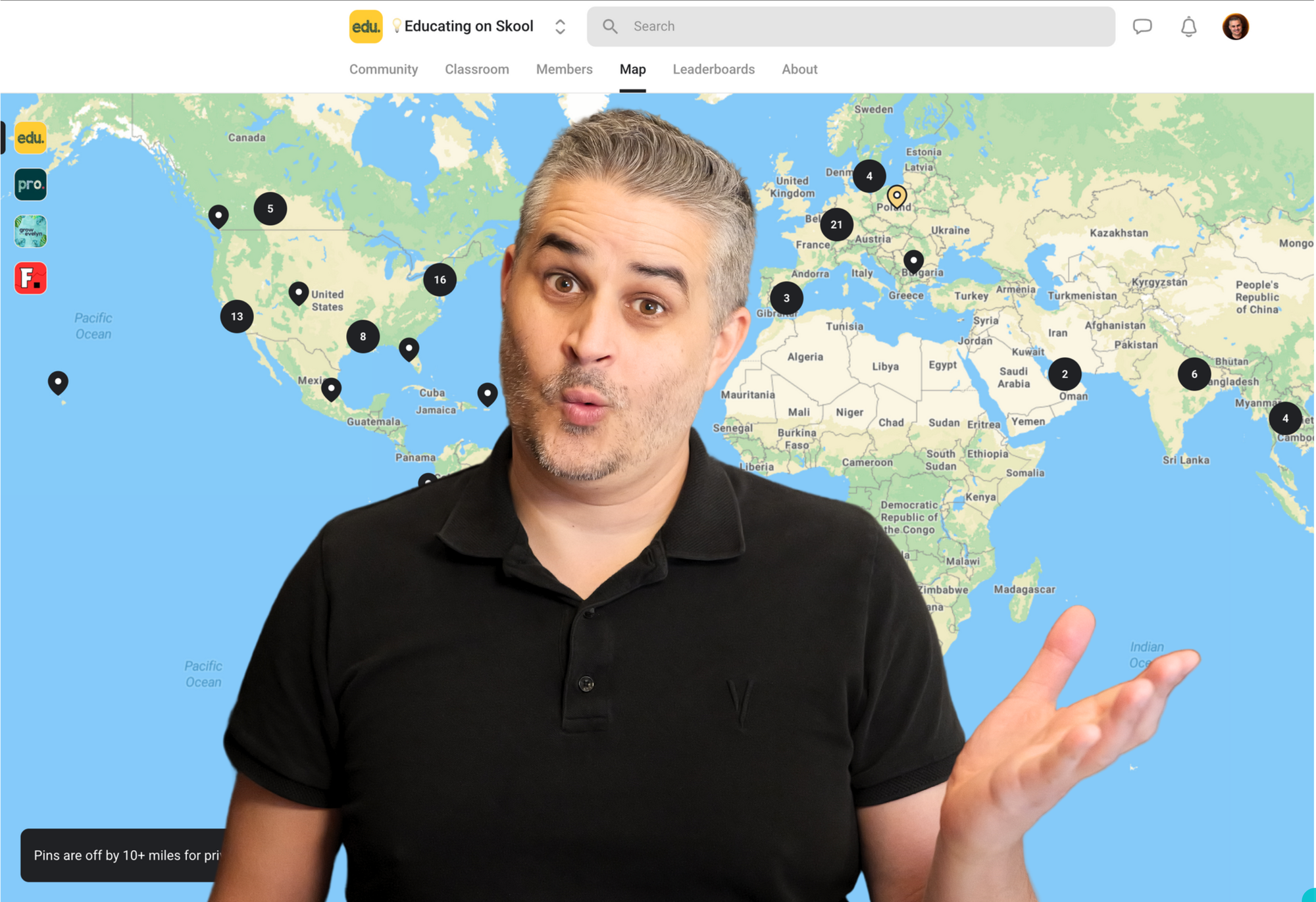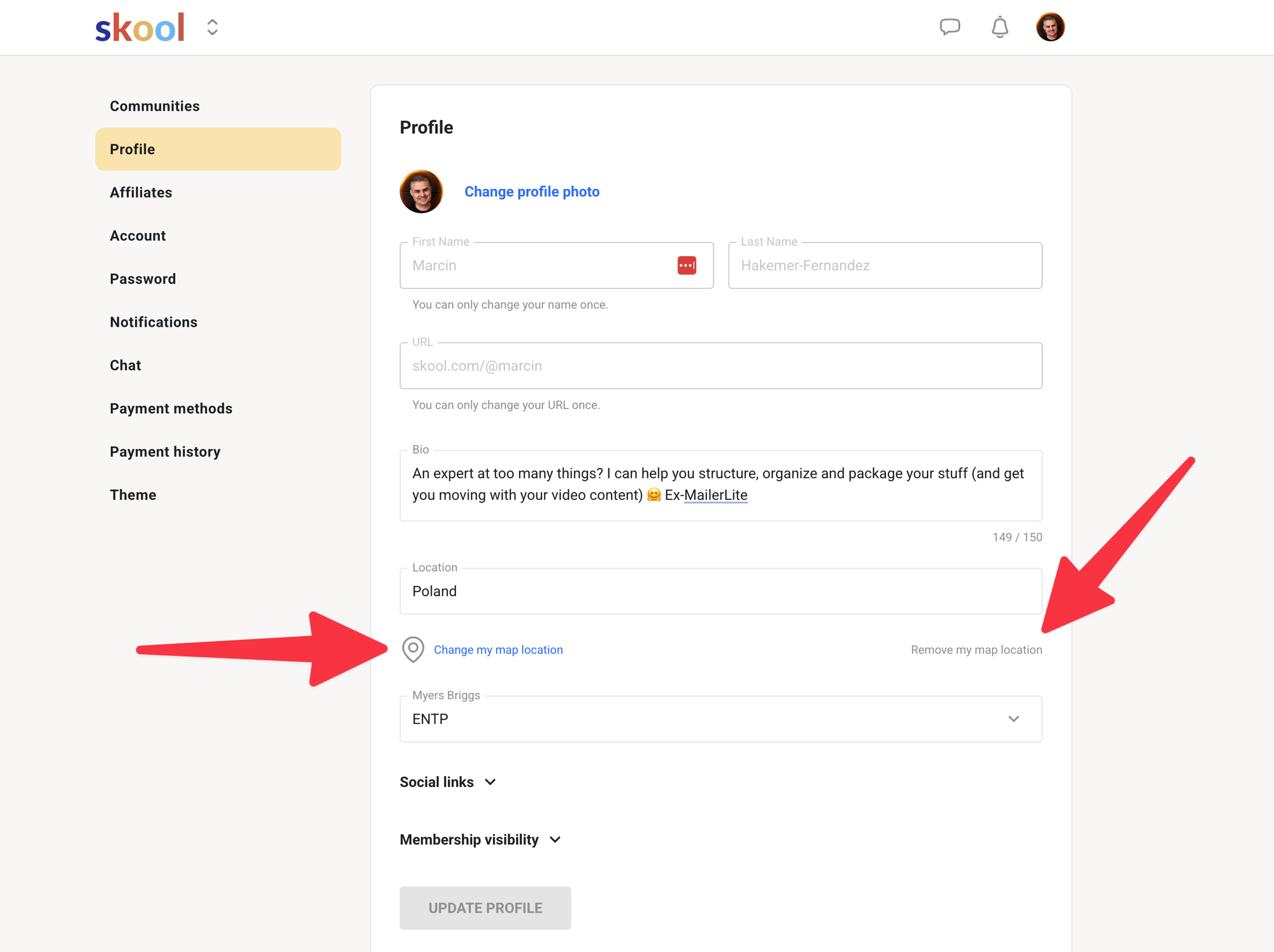Exploring Skool Maps: Enhancing Community Connections

All links in this article are referral links. Thank you for supporting my work 🙏
In this blog, we dive into the exciting new Skool Maps feature that revolutionizes how community members connect based on proximity. By leveraging this innovative tool, users can discover who is around them, fostering deeper relationships and enhancing their overall experience in the community.
Table of Contents
- Introduction to Skool Maps
- Encouraging Community Meetups
- Practical Applications for Niche Communities
- Leveraging Affiliates for Community Growth
- Strategies to Retain Members and Decrease Churn
- Measuring the Impact of the New Features
- FAQ
Introduction to Skool Maps
Skool Maps is an innovative feature designed to enhance community interactions by allowing members to connect based on their geographical proximity. Imagine being able to see who else is nearby, fostering friendships and collaborations that might not have occurred otherwise. This tool creates a dynamic environment where members can engage more deeply with one another, turning a digital community into a vibrant, interconnected network.
How Skool Maps Works
At its core, Skool Maps functions by placing pins on a digital map that indicate the locations of community members. Each member has the ability to customize their pin, adjusting their displayed location while safeguarding their privacy. By default, the system is designed to ensure that pins are offset by up to ten miles, effectively balancing the need for utility with the importance of safety.

When you click on a pin, you can access a preview of the member's profile, allowing for quick connections. This seamless integration encourages interaction, enabling members to follow, chat, and explore profiles right from the map interface. The scalability of Skool Maps is impressive, capable of handling over a hundred thousand pins without compromising performance.
The Importance of Proximity in Community Building
Proximity plays a vital role in forming meaningful connections. Think back to your school days; the friends you made were often those who sat next to you or lived nearby. Skool Maps harnesses this principle, allowing members to see who is close by, facilitating friendships based on convenience and shared interests.
Strengthening individual connections ultimately enhances the community as a whole. When members feel a bond with others in their vicinity, their engagement levels rise. They are more likely to participate actively, attend events, and contribute to discussions, leading to a richer community experience.
Business Use Cases for Skool Maps
Skool Maps opens up a plethora of business opportunities. For community owners, it serves as a powerful promotional tool. By showcasing the map in marketing materials, you can provide tangible social proof of an active, engaged community. Prospective members can see that real people are part of the community, increasing their likelihood of joining.
Additionally, businesses can leverage Skool Maps to improve content consumption. When members connect based on proximity, they can discuss and contextualize community content in a more personalized manner, enhancing overall engagement.
Enhancing Member Engagement Through In-Person Meetups
One of the standout features of Skool Maps is its potential to facilitate in-person meetups. Members can easily identify who is nearby and arrange gatherings, whether for casual hangouts or structured events. This face-to-face interaction is crucial for deepening relationships and fostering a sense of belonging.
By hosting meetups, community organizers can create memorable experiences that transform members from casual participants into passionate advocates. Consider offering incentives for members to attend or even organizing events in popular local spots. The impact of meeting in person cannot be understated; it significantly increases member loyalty and engagement.
Encouraging Community Meetups
Creating an environment that encourages community meetups is essential for building lasting connections. The introduction of Skool Maps makes it easier than ever for members to find and connect with others nearby. Start by promoting the map feature in your community, highlighting its potential to facilitate in-person interactions.
Consider hosting a kickoff event where members can explore the map together. This initial gathering can set the stage for future meetups and help members feel more comfortable reaching out to one another. Encourage members to share their experiences, perhaps by posting photos from their meetups, which can inspire others to join in.
Tips for Organizing Meetups
- Set Clear Objectives: Define the purpose of the meetup, whether it's for networking, skill-sharing, or just casual socializing.
- Leverage Local Venues: Choose popular local spots to host events, making them accessible and appealing.
- Provide Incentives: Offer incentives for attendance, such as giveaways or exclusive content, to encourage participation.
- Utilize the Map: Encourage members to use Skool Maps to find others nearby who share similar interests.
Practical Applications for Niche Communities
Skool Maps isn’t just for general communities; it holds significant potential for niche groups. For example, a skateboarding community can thrive by connecting skaters in the same area. Members can arrange sessions, share tips, or even collaborate on local events.
Similarly, fitness groups can benefit immensely. Members can find workout partners, participate in local classes, or even create challenges that foster camaraderie and accountability. The possibilities are endless when proximity is leveraged effectively.
Specific Use Cases for Niche Communities
- Art Classes: Artists can connect with local peers for collaborative projects or exhibitions.
- Book Clubs: Readers can arrange meetups to discuss their latest reads or swap books.
- Travel Groups: Members can find travel buddies for upcoming trips, enhancing the experience through shared adventures.
Strategies to Retain Members and Decrease Churn
Retention is crucial for the long-term success of any community. With Skool Maps, you can enhance member engagement, which directly impacts churn rates. Regularly check in with members who may be at risk of leaving, and offer personalized support to address their concerns.
Implementing a buddy system can also be beneficial. Pairing new members with seasoned ones can help them feel welcomed and engaged. This connection can significantly reduce the likelihood of them leaving.
Measuring the Impact of the New Features
As you implement Skool Maps, it’s essential to measure their impact on your community. Keep track of metrics such as member engagement, attendance at meetups, and referral rates. This data can provide valuable insights into what’s working and what needs adjustment.
Utilizing analytics tools will help you gauge the effectiveness of your strategies. Pay attention to member feedback as well; qualitative insights can often reveal deeper trends than numbers alone.
FAQ
How can I encourage members to use Skool Maps?
Start by promoting the feature through community posts and events. Highlight its benefits and encourage members to explore who is nearby.
What types of meetups work best for different communities?
Consider the interests of your members. Casual gatherings, workshops, or activity-based meetups often yield the best results.
What if members are hesitant to meet in person?
Start with virtual meetups to build comfort before transitioning to in-person events. Highlight successful stories from members who have taken the plunge.
How do I maintain engagement after initial meetups?
Follow up with attendees, gather feedback, and create ongoing opportunities for interaction to keep the momentum going.

